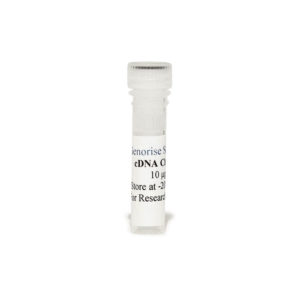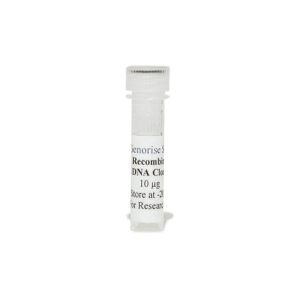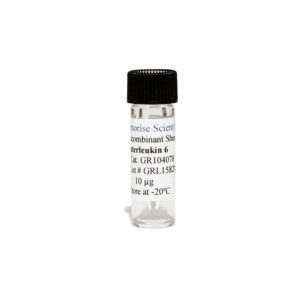Recombinant Bovine EGF Protein
$116.00 – $189.00
The recombinant bovine EGF protein is derived from in vivo expression of canine EGF gene in E. coli and purified using his-tag affinity column and can be used in multiple applications such as cell culture, ELISA and western blot.
Alternative names for EGF: Epidermal growth factor
This product is for Laboratory Research Use Only not for diagnostic and therapeutic purposes or any other purposes.
- Description
- Product Citations
- Reviews (0)
Description
Genorise Recombinant Bovine EGF Protein Summary
Alternative names for EGF: Epidermal growth factor
Alternative name for bovine: Cow, cattle, bull
Product Specifications
| Purity | > 97%, by SDSPAGE under reducing conditions and visualized by silver stain. |
| Endotoxin Level | < 0.1 EU per 1 μg of the protein by the LAL method. |
| Activity | Measured cell proliferation assay using Balb/3T3 mouse embryonic fibroblast cells. Rubin, J.S. et al. (1991) Proc. Natl. Acad. Sci. USA 88:415.
The ED50 for this effect is typically 20-100 pg/ml. |
Background:
Epidermal growth factor (EGF) is a growth factor that stimulates cell growth, proliferation, and differentiation by binding to its receptor EGFR. Human EGF is a 6045-Da protein[1] with 53 amino acid residues and three intramolecular disulfide bonds.[2] EGF results in cellular proliferation, differentiation, and survival.[3] EGF is a low-molecular-weight polypeptide first purified from the mouse submandibular gland, but since then found in many human tissues including submandibular gland, parotid gland. Salivary EGF, which seems also regulated by dietary inorganic iodine, also plays an important physiological role in the maintenance of oro-esophageal and gastric tissue integrity. The biological effects of salivary EGF include healing of oral and gastroesophageal ulcers, inhibition of gastric acid secretion, stimulation of DNA synthesis as well as mucosal protection from intraluminal injurious factors such as gastric acid, bile acids, pepsin, and trypsin and to physical, chemical and bacterial agents.[4] EGF acts by binding with high affinity to epidermal growth factor receptor (EGFR) on the cell surface. This stimulates ligand-induced dimerization,[5]activating the intrinsic protein-tyrosine kinase activity of the receptor (see the second diagram). The tyrosine kinase activity, in turn, initiates a signal transduction cascade that results in a variety of biochemical changes within the cell – a rise in intracellular calcium levels, increased glycolysis and protein synthesis, and increases in the expression of certain genes including the gene for EGFR – that ultimately lead to DNA synthesis and cell proliferation.[6]
References
- Harris RC, et al. (2003). Experimental Cell Research 284 (1): 2–13.
- Carpenter G, et al. (1990). The Journal of Biological Chemistry 265 (14): 7709–12.
- Herbst RS (2004). Intl J Radiation Oncology, Biology, Physics 59 (2 Suppl): 21–6.
- Venturi S, et al. (2009). Nutrition and Health 20 (2): 119–134.
- Dawson JP, et al. (2005). Mol. Cell. Biol. 25 (17): 7734–42.
- Fallon JH, et al. (1984). Science 224 (4653): 1107–9.
Product Citations
Be the first to review “Recombinant Bovine EGF Protein”
You must be logged in to post a review.




























Reviews
There are no reviews yet.